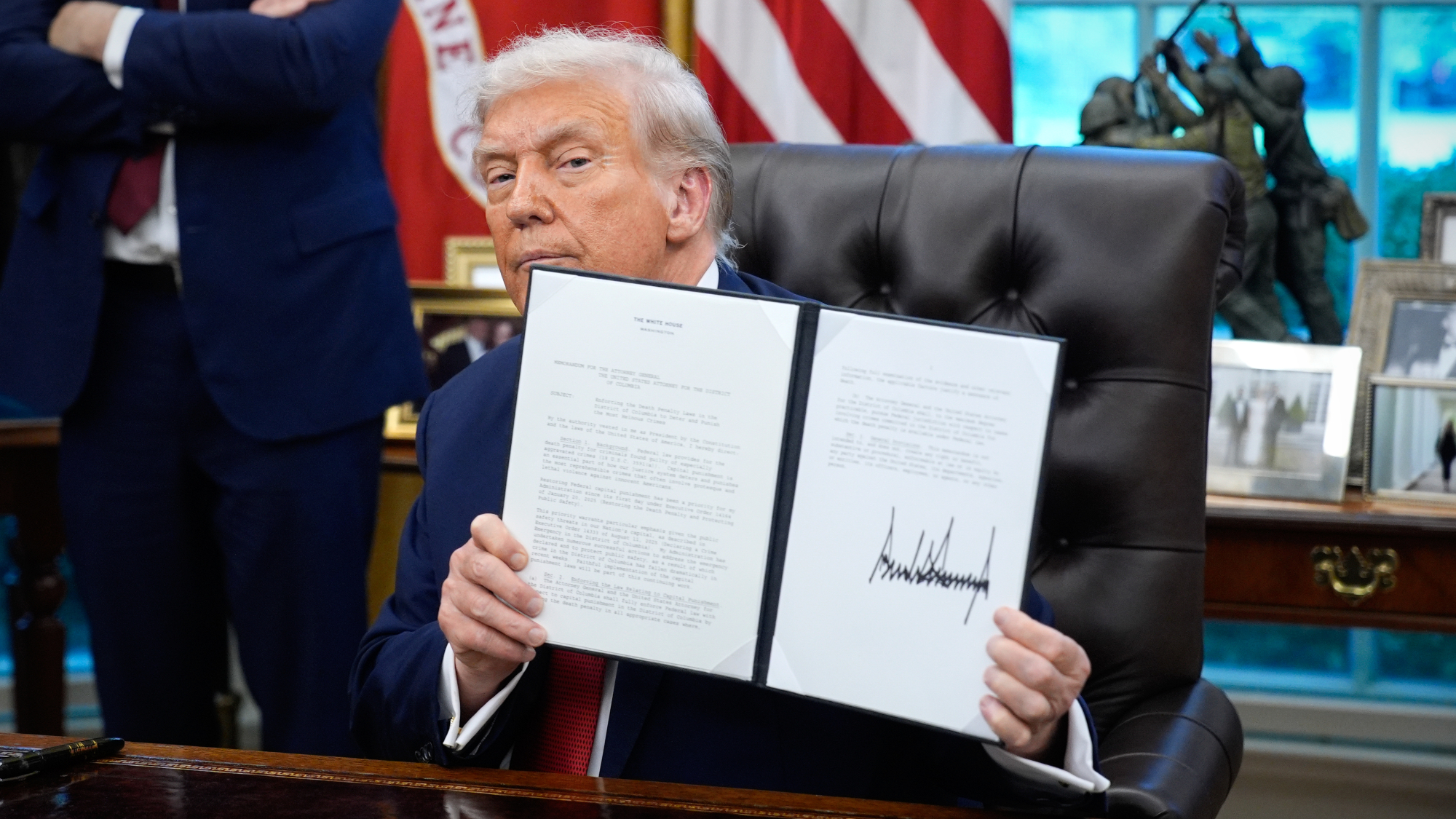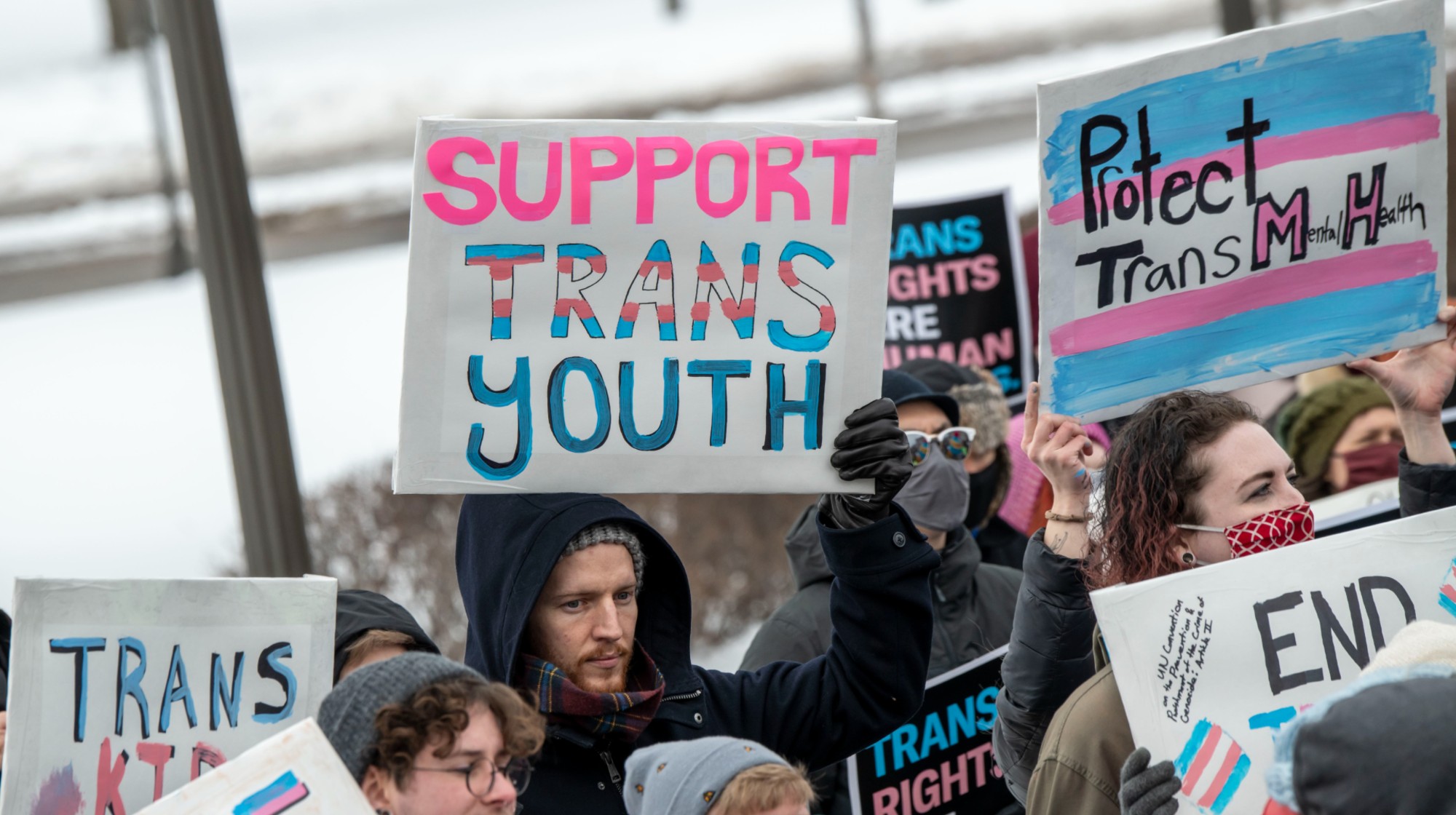America's untenable happiness imperative
How COVID-19 exposed our culture's relentless pressure to be positive


There were many good reasons not to be happy in America this winter.
By January, an average of 3,100 people were dying every day from COVID-19. And, if you were lucky enough to be spared from the most acute impacts of the virus, there was still plenty of isolation, anxiety, grief, and feelings of helplessness to go around.
Meanwhile, as the pandemic raged on, we watched a violent and deadly insurrection at the nation's capital that served as a finale to the most unhinged and rancorous presidency of my lifetime. After four years of watching the nation splinter and smoke and shatter and beat itself up, on January 6, the figurative became real. Added to all of this was a brutal recession, a series of unusual and extreme weather events, and news reports about alarming, non-climate-or-pandemic-related threats to human survival. More recently, mass shootings and police killings have made a devastating return to our streets and social media feeds.
The Week
Escape your echo chamber. Get the facts behind the news, plus analysis from multiple perspectives.

Sign up for The Week's Free Newsletters
From our morning news briefing to a weekly Good News Newsletter, get the best of The Week delivered directly to your inbox.
From our morning news briefing to a weekly Good News Newsletter, get the best of The Week delivered directly to your inbox.
And yet despite this abundance of bad news — which included, for me, a months-long string of rejections for a book project that I had poured years into — I realized at some point that I was still feeling bad about the fact that I wasn't feeling happier. In the rare times when I socialized, whether that was on the phone or outdoors and masked, I felt slightly ashamed that I wasn't more energetic and chipper. In quieter moments by myself, I noticed a nagging feeling of self-reproach for not feeling more content or buoyant. I knew this wasn't rational. More than perhaps any other time in my life, this cursed winter had given me, and millions of others, a long list of logical reasons for not feeling particularly cheery. And yet there it was.
As someone with a history of anxiety and depression, I wasn't entirely surprised by this. But I was intrigued. Because while certainly some of this guilt could be traced back to the bad feelings factory that is my psyche, I don't think this explained all of it. I was — and still am — convinced that some of the happiness inadequacy I felt was a reflection of the country and culture where I live.
For 36 years, I have absorbed the American pressure to be bright, shiny, happy, and perpetually laughing. But for the first time, in the extremity of the pandemic, the senses of how I was supposed to feel and how I actually felt had shifted far enough to leave a gulf between them that was too wide to ignore.
Was this American pressure to be happy real or imagined? Where does it come from? Is it possible to be happy as often as Americans are expected to be? And what would it mean to finally opt out?
A free daily email with the biggest news stories of the day – and the best features from TheWeek.com
The word "happiness," of course, appears in one of the most famous sentences in U.S. history: "We hold these truths to be self-evident, that all men are created equal, that they are endowed by their Creator with certain unalienable Rights, that among these are Life, Liberty and the pursuit of Happiness." But at some point, that crucial bit of hedging contained in the words "pursuit of" seemed to dissolve, and left us with a culture that views abiding happiness as a birthright.
It's hard to pinpoint exactly when this happened. Though it was certainly visible to the British social theorist Harriet Martineau, who in her 1838 book Retrospect of Western Travel, described "the inexhaustible American mirth" and noted of Americans that, "One of the rarest characters among them, and a great treasure to all his sportive neighbours, is a man who cannot take a joke."
In the history of this country, "the feeling, the imperative… to feel happy is deeply rooted historically and pervasive," says Daniel Horowitz, emeritus professor of American Studies at Smith College and author of the book Happier? The History of a Cultural Movement That Aspired to Transform America.
By the 20th century, this American hunger for happiness had gathered momentum. That century brought us the Walt Disney Company (1923), the advent of laugh track for radio (1940s) and television (1950s), the Norman Vincent Peale mega-bestseller The Power of Positive Thinking (1952), Harvey Ball's iconic smiley-face logo (1963), a board game called "Happiness" (1972), the McDonalds Happy Meal (1979), the hit Number One Billboard single, "Don't Worry, Be Happy" (1988), and countless other tangible and not-so-tangible directives to cheer up. In 2001, the writer John Perry Barlow wrote, "nearly everyone in this country feels the weird, invisible pressure to pursue happiness," and he further noted that, by the time he turned 30, it became "apparent that my wariness of the pursuit of happiness might be a subtle form of treason."
This, mind you, was all before the launch of the iPhone in 2007, and the arrival of social media networks — Facebook (2004), Twitter (2006), Instagram (2010), Snapchat (2011), TikTok (2016) — which sent our national happiness imperative into overdrive. Now it wasn't just billboards, magazines, televisions and radios telling us to perk up, it was hyper-intelligent, internet-connected machines in our pockets that provided endlessly scrollable feeds of smiling people who seemed to be making the most of their carefree lives. If those social networks weren't incentive enough, you could sign up for apps platforms Happify, Happy, and Happier, or attend happiness expos, or pick from an endless supply of happiness how-to books to keep yourself moving on the path toward enduring bliss.
Then 2020 happened.
And with it came daily death tolls and lockdowns and Zoom funerals and catastrophic job losses and curfews (not to be confused with COVID-related lockdowns) and police helicopters buzzing overhead and a coordinated attempt to undermine the results of a legally-decided election and waves of burnout and anger and PTSD and clusters of youth suicides. Last spring, we learned that one in three Americans now show signs of clinical anxiety or depression, which, as the Washington Post reported, "suggest[s] a huge jump from before the pandemic." A poll in June found that Americans were the unhappiest they had been in 50 years.
So I suspect that what I noticed during the winter in my brain in Rhode Island was part of a much larger, nationwide phenomenon. For my entire life I had been bombarded with exhortations to feel joy, from the people telling me to "smile" for photos to the deliriously happy studio audiences for shows like Ellen and The Price is Right. Suddenly reality had other plans.
To exist between these two forces, the aggressive American imperative for happiness and the cascading crises of the last 12 months, was beyond uncomfortable. It was untenable.
Something has to change.
You can't unload a burden that you aren't aware that you're carrying.
For me, I found it therapeutic to simply hear that I'm not crazy: There really is an enormously intense pressure in the United States to be, or at least appear, happy. Peter Stearns, a professor of history at George Mason University and author of the book Happiness in World History, told me, "The western world generally values happiness, but [in the United States] we have a particularly intense take on it."
Andrew Solomon, a writer and professor of psychology at Columbia University, told me that when he traveled to various countries to promote his book, The Noonday Demon: An Atlas of Depression, he observed that, "There was no place except America where I felt like one's moral fiber was called into question by the mere fact of sadness." To simply hear this fact acknowledged openly felt like a powerful first step.
There are other ways that, both individually and collectively, we can turn down the pressure that exists around us.
First, we're due for an examination of what passed for happiness in America — and this starts with those famous words from the Declaration of Independence. In a 2017 TED Talk, Stanford historian Caroline Winterer convincingly argues that the "happiness" cited in the Declaration of Independence did not in fact refer to the private, personal emotional state we currently associate with the word, but instead, the 18th-century concept of public happiness, which, in her words, meant, "Every citizen thinking of the larger good, thinking of society, and thinking about the structures of government that would create a society that was peaceful and that would allow as many people as possible to flourish." Listening to her short speech can help you fight back against the absurd, yet persistent, sense that you've somehow failed the country if you're unhappy.
Meanwhile, it can be good to think more clearly about the particular brand of happiness that we're often being peddled in our consumer-driven society. It isn't often a pressure to be content or feel satisfied with what you have, Dennis Tirch, a therapist, author, and founding director of the Center for Compassion-Focused Therapy, told me, nor is it a pressure to feel really happy in the presence of your family just because they're there, or happy with your body just because it's healthy. "There's a kind of happiness which is about drive and acquisition and competition" he says. So if you find yourself feeling happiness-insufficient, it's worth asking yourself, "What kind of happiness, specifically, am I beating myself for failing to achieve?"
Another quirk of our happiness-obsessed culture is that we don't really seem to spend much time talking about what the word actually means. Daniel Horowitz informed me that psychologists actually break the concept into two distinct types: hedonic and eudaimonic happiness. The first is the kind of short, intense feeling we get from a piece of chocolate or a back rub or from watching our favorite sports team win the championship. The second is a steadier, more subtle sense of contentment based on work and activities that provide purpose, meaning, and satisfaction. You might be lucky to achieve hedonic happiness from time to time. But setting your sights on eudaimonic happiness is much more sustainable and within your control.
Another lightbulb moment for me was the realization that, in all of my years living amidst this pressure to be happy, I had never actually had a conversation about realistic expectations for how often I might achieve it. Now I had the chance to ask experts a question that only recently occured to me: Is it physically or psychologically possible to be as happy as we're told to be in this culture? The answer, not so surprisingly, is "no."
Human beings are engineered to experience a wide range of emotions, Nyasha Grayman-Simpson, a professor of psychology and Africana studies at Goucher College, urged me to remember. "Our attempts to be and/or portray ourselves as being happy 24/7 are out of balance with our natural design," she said. "Being fully human involves the embodiment of a fully varied emotional life."
"We would be richer as a culture if we recognize that we don't live in an emotionally binary world," Jaqueline Mattis, a professor of psychology and dean of faculty at Rutgers University, told me.
It appears that I'm not the only one interested in questioning unrealistic happiness expectations in the age of COVID-19. Since last year, I've been heartened to see a rising awareness and discussion of the specific concept of "toxic positivity": the unhealthy pressure to feel good amidst circumstances that merit negative emotions. During the last year The Washington Post, The Cut, Bustle, CNN, Elle, and other outlets have published pieces introducing and explaining this concept. As one psychotherapist told Refinery29: "If you try to get rid of bad emotions, you damage your whole internal world."
With an ever-growing number of Americans getting vaccinated, it's hardly too early to think about what happens after all of this. Happiness, and the pressure to perform it for others, is a valuable lens through which to view our post-COVID future.
There's an actual field of psychology that has studied the effects of quarantine, Mattis told me, and, in the months and years ahead, it would be wise for us to heed its lessons. One takeaway is that people who have experienced prolonged isolation from others tend to emerge with a heightened sense of suspicion, anger, and depression, she says. From this, it's not hard to foresee some folks becoming extra irritable in the face of post-COVID exhortations to be joyful. To this I would add a PSA on behalf of the less cheery among us: Please, please, once COVID passes, don't tell people to perk up and be happy. You don't know what their COVID experience was like and, anyway, they might not be the kind of person who wanted to hear this even before the pandemic.
Another effect of prolonged isolation is that it's normal for people, especially young people, to over-correct with euphoria-fueled irresponsibility. (Perhaps this helps explain the astonishing crowds of spring breakers spotted in Miami last month.) Mattis says that it would be wise for us as a culture — as communities, as families — to build this awareness into our response. "We certainly want to set boundaries as a nation and culture," she says, but we should also anticipate this natural reaction to being stuck in isolation or close quarters, "and find compassionate ways of responding to that as a society to our young people, so we don't end up disciplining them for living out a normal response. For being human."
Based on what we know about how the "Roaring Twenties" followed the Spanish Flu, Stearns told me it wouldn't surprise him if "we had this year-plus of tremendous tension, and we want some years of release."
Already, some media outlets are doing their part to help make this happen. In March, a Vox piece proclaimed "This Actually Might be the Best Summer Ever." The April 2021 cover of Town and Country features a photo of a dancing, beaming Diana Ross with the headline: "Remember Fun? Get Ready for the Comeback." The New York Times' David Brooks recently wrote, "I'm...convinced that the second half of this year is going to be more fantastic than we can imagine right now."
Having these conversations, I felt a twinge of concern that our culture will have gained no emotional intelligence amidst this shared trauma, and that our happiness imperative will return even stronger than before.
Solomon, for his part, warned against equating vaccinations and dwindling infection rates as a magical recipe for happiness. "The shadow of COVID is going to be long," he says, and the reason is fairly straightforward: If you've spent an entire year thinking that you might die at any moment or that others might die because of what you did or that your loved ones might die, the effect of that sustained anxiety doesn't just disappear. Your brain is changed by this experience. "That doesn't mean that you'll never be happy again," he says. "But it's going to be a long slow process. And it's going to go in phases."
The optimist in me says that this moment of crisis could provide an opportunity to create a more empathetic and emotionally honest society. "A culture saturated with happiness makes it difficult for people to deal with sadness, in themselves and others," Stearns wrote in a 2012 article for the Harvard Business Review. The last 12 months have presented Americans with undeniable, widely-shared emotional challenges, from our experiences of isolation to pervasive grief to widespread, and entirely rational, hypochondria. Perhaps this moment of shared hardship will create a bit more space in American life for sadness — or, really, anything other than bliss.
To offer a slightly personal sales pitch, I can share that my own attempts to loosen my grip on the pursuit of happiness have, somewhat counterintuitively, allowed me to be more comfortable and at ease with the world. In a word: happier.
Living through COVID times has also made me more aware of the (modest, but tangible) influence that I have on the emotional lives of friends, siblings, co-workers, and, perhaps most importantly, romantic partners. In at least one case, during these dark months I had an opportunity to share a message with someone close to me: While I certainly want them to be happy as possible, I won't judge them or be disappointed in them when they're sad. I told them I would love them just the same, and I will be there for them, regardless of how they felt or appeared on a given day. To tell someone this — and to be told this, in turn — was revelatory. And it clarified one of my core beliefs about love: It doesn't insist that its recipient be bright and chipper all the time. It makes space for the natural reality of unhappiness.
Perhaps such conversations are one reason behind the uptick in COVID-era relationship satisfaction found in one recent poll. And Mattis helped me understand why sharing this message with the people around you can be such a gift. "The thing about the pressure to be happy all the time is it requires us to wear masks, which also requires others to never actually have to see [each other]," she says. This idea applies particularly to social media, where, as Solomon says, our tendency to broadcast images of unyielding happiness "traps and imprisons the people who are putting forward those images and it injures other people who feel they can't live up to them."
To be sure, there are all kinds of challenges that await us in a society where we're more emotionally honest with each other. But there's also a great deal of freedom. And, in theory at least, what's more American than that?
Philip Eil is a freelance journalist based in Providence, Rhode Island. He is the former news editor of the alt-weekly, the Providence Phoenix. And since that paper closed in 2014, he has contributed to The Atlantic, Men’s Health, VICE, The Boston Globe, Literary Hub, and Columbia Journalism Review, among other outlets.
-
 ‘What a corrective to such nonsense’
‘What a corrective to such nonsense’Instant Opinion Opinion, comment and editorials of the day
-
 TikTok secures deal to remain in US
TikTok secures deal to remain in USSpeed Read ByteDance will form a US version of the popular video-sharing platform
-
 Trump HHS moves to end care for trans youth
Trump HHS moves to end care for trans youthSpeed Read The administration is making sweeping proposals that would eliminate gender-affirming care for Americans under age 18
